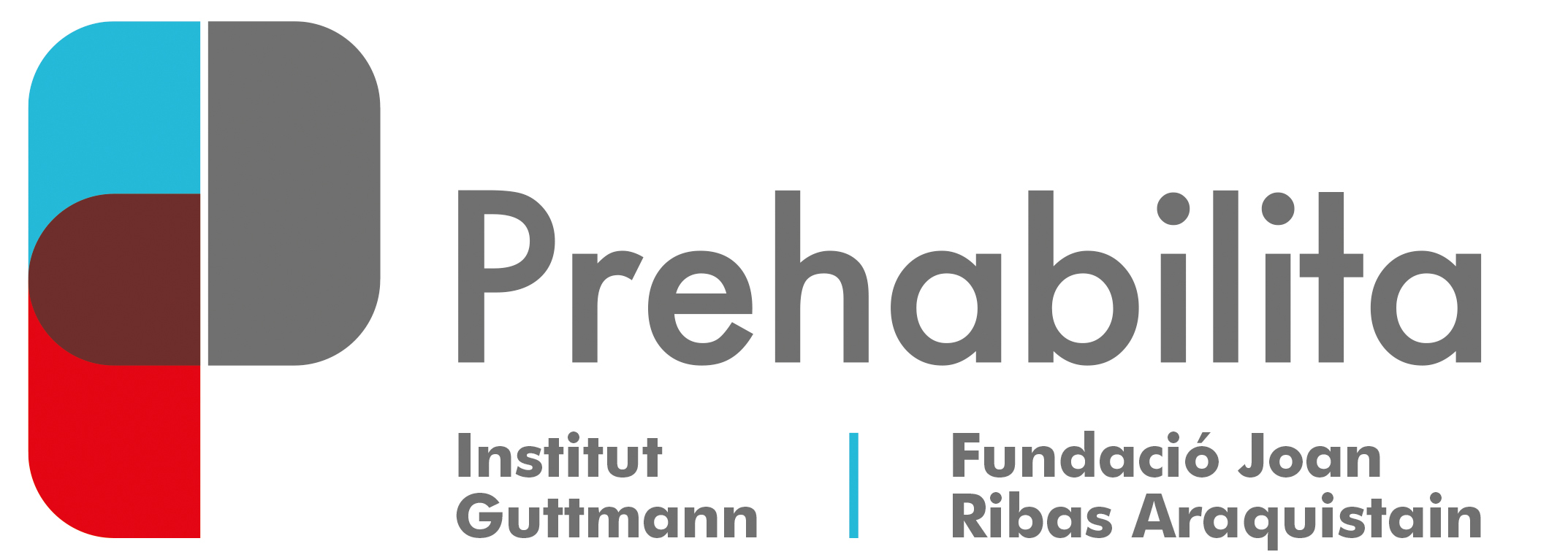PREHABILITA Project
The Joan Ribas Araquistain Programme for Therapeutic Research and Innovation in Prehabilitation, Rehabilitation and Comprehensive Approach to the Sequelae of Brain Tumours.

Prehabilita is a research project aimed at reducing the physical and cognitive sequelae of brain tumour surgery through an intensive and personalised prehabilitation programme prior to the intervention. The project is under the scientific leadership of the Institut Guttmann and is funded by the Joan Ribas Araquistain Foundation.
Context
Brain tumour surgery has two main objectives: on one hand, to ensure the greatest possible resection of the tumour tissue and to minimise its recurrence; and on the other, to avoid the resection of healthy brain tissue to minimise the appearance of sequelae caused by the intervention.
Until now, prehabilitation strategies – prior to surgery – have been carried out using invasive techniques such as the implantation of intracranial electrodes. However, these techniques require two surgeries instead of one, which causes or increases the risk of infections and other post-operative complications.
Según datos de la Asociación Española contra el Cáncer (AECC), la incidencia de los tumores del sistema nervioso central en España es de 8,73 casos por cada 100.000 habitantes en el caso de los hombres, y de 5,41 en las mujeres. En adultos, los tumores cerebrales primarios ocupan el 13º lugar de frecuencia de todos los cánceres, mientras que en niños son la segunda forma más común de cáncer.
Thanks to brain plasticity, it is possible to influence the pattern of brain connections to establish new ones, transferring functional activity from one area of the brain to another. The ultimate goal is to allow surgeons to carry out a more drastic resection of the tumour and reduce the risk of recurrence without increasing the risk of functional sequelae, as the neuronal activity has been transferred to another area of the brain. This strategy is known as prehabilitation.
Methodology
Participants in the PREHABILITA study are patients who have to undergo resection surgery for a brain tumour and who start a protocol based on a double intervention:
1) Prehabilitation: inducing structural changes in the brain that allow the appearance of a new functional capacity before surgery. In this way, the compromised neurological function is partially or totally “transferred” to brain areas that will not be affected by tumour resection. This is done by:
- Neuromodulation sessions (TMS or tDCS) that allow the plastic capacity of the nervous system to be optimised, guiding the establishment of new connections towards their maximum functional capacity
- Motor, cognitive or language training tasks that are personalised and specifically aimed at treating functionality that may be compromised by surgery
2) Neurorehabilitation: allowing sensory, motor and cognitive neurological sequelae that may appear after surgery to be minimised, as well as the cognitive impact derived from the tumour itself.
Prehabilitation and neurorehabilitation interventions alike require sufficient intensity and time to produce and consolidate the structural plastic changes that give rise to the appearance of new functional capacity. PREHABILITA’s objective is therefore to assess the feasibility and efficacy of this non-invasive prehabilitation protocol.
Minimising the sequelae of brain tumour surgery
Episode 7, Beines de Mielina, the Institut Guttmann podcast









